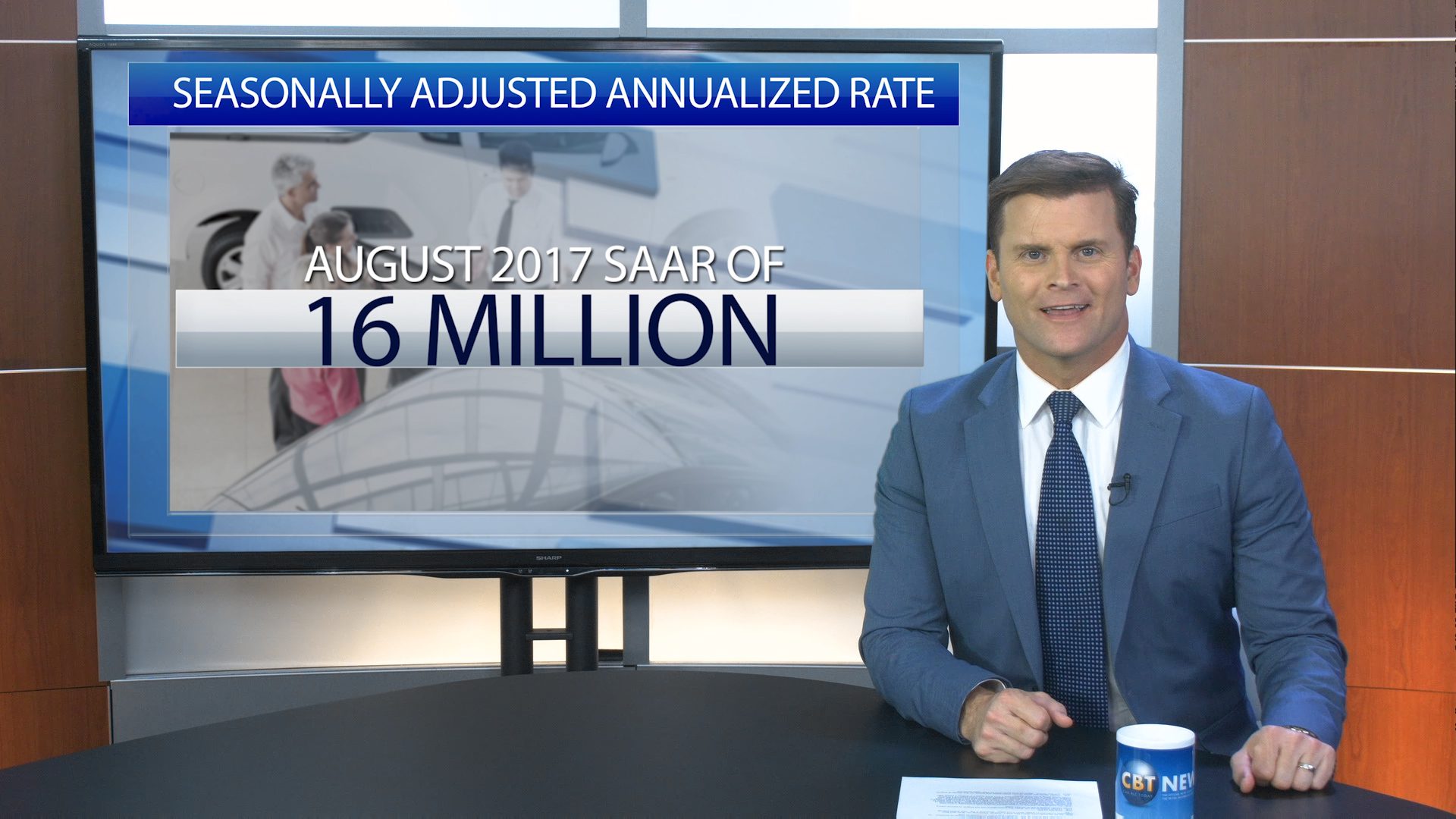CBT News Anchor Joe Gumm reports on U.S. automotive sales totals for the month of August 2017 at dealerships around the U.S.
The seasonally adjusted, annualized sales rate for August was 16 million, the lowest SAAR since 15.6 million units in February 2014.
The average days to turn continues to hit levels not seen since July 2009. New vehicles now sit on dealer lots an average of 77 days, two days higher than July.
Despite high inventory, automakers held back on zero-percent financing deals in the month of August. Only 10% of loans in August had zero-percent APRs, compared to 15% in August 2016.
August Winners
Although GM’s Chief Economist Mustafa Mohatarem said Hurricane Harvey had an adverse effect on deliveries during the last week of the month, economic fundamentals remained supportive of strong sales. The automaker reported a 7.5% increase for the month. GM said it would offer a $1,000 new-vehicle discount to people living in areas ravaged by Harvey.
The Lexus brand was down 0.4% but Toyota was up 6.8%, overall the brand increased 8%. The automaker’s crossovers, SUVs and pickups were the bright spot, rising 19.2%. But car sales fell 7.2%.
More winners for the month of August included Volkswagen Group of America, up 6.1%, with the VW brand up 9%. Subaru and Volvo increased as well.
August Losers
As far as those who didn’t fare well in August: Declining car, SUV and fleet deliveries continued to weigh down Ford sales, declining 2.1%. The brand was off 1.9%.
FCA fell 10.6%
Nissan dropped 13.1%. Even the automaker’s red-hot Rogue crossover had a tough month, falling 9.5% to 29,844 units.
According to Jessica Caldwell (Senior Analyst with Edmunds) “Labor Day weekend usually brings in nearly a third more buyers than the typical first weekend of the month, so this is critical opportunity to make a dent in inventory. Given the state of the market, we would usually expect automakers to pull out all the stops to get shoppers into their showrooms, but based on what we saw in August, it’s not a sure thing.” She also added, “Car shoppers now are savvy enough to know that you can get the best deals on outgoing model-year vehicles,” Caldwell said. “In many ways it’s a buyer’s market, and they’re not going to purchase if they think there’s a chance a better offer could come along in the near future.”








